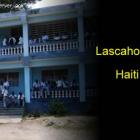ADVERTISEMENT
Elie Lescot - Haiti Observer Blog
Elie Lescot, Haiti Observer Blog. Read the following articles about Elie Lescot
Rene Depestre, Famous Haitian Writer
Haiti's most famously remembered, celebrated and praised writers seemed to all tend towards not just the literary arts, but a decidedly political activism. Whether it is the art which inspired the politics or the politics which gave way to the great art, in the case of the writings of Rene Depestre, both appear hand-in-hand, twain catalysts which drove him to create essays, novels, short stories and his famous poetry.
Rene Depestre was born in Jacmel on August 29, 1926, but, when his father died ten years later, he went to Port-au-Prince to live with his grandmother. The nostalgia of leaving his remaining family would later greatly influence his work. His debut poetry collection, entitled, 'Étincelles' was published in 1945. Just shy of 20 years old he also co-founded a magazine which would later have the distinction of having an edition seized by the government in their first year for the homage paid to Breton.
Elie Lescot Ruled by Force and Intimidation
Elie Lescot became Haiti's 31st president in 1941. Born into the mulatto elite class, Lescot began his political career after the death of his wife. He served in the Chamber of Deputies, Parliament's lower house, later becoming a political appointee under presidents Borno and Vincent.
His position as Ambassador to the Dominican Republic (DR) led him to become an ally of DR President Trujillo. Trujillo's political capital helped Lescot win the presidency, despite the Chamber of Deputies opposition of him.
Elie Lescot immediately wielded power by installing himself as Commander of the Military Guard and populating government posts with Caucasian and mulatto elites. Haiti's majority black populace detested him for his prejudice.
Daniel Fignole a Brilliant Labor Leader
Daniel Fignole, born in 1913 in Pestel and raised in grinding poverty, suffered from childhood malnutrition. To escape the poverty of his birthplace, Daniel re-settled in Port-au-Prince and sought an education. He proved to be an excellent student, winning acceptance to a top-tier university in the capital.
During the early 1940s, Daniel Fignole published the leftist, Chantiers, in which he harshly criticized the mulatto elite of Haiti. President Elié Lescot, provoked by Fignolé's attacks, stopped the publication, axed him from his government job, and spied on him.
Indifferent to government actions, Daniel Fignole kept organizing the working-class of Port-au-Prince. They became aware of him as an electrifying orator, motivational writer, and powerful labor leader. It was rumored he could rally mass demonstrations at a moment's notice. In 1947, he headed the Peasant Worker Movement, a tight-knit union comprised of every labor sector.
Paul Magloire, Haiti's 35th president
Paul Magloire, Haiti's 35th president, was born in 1907, heir of a military father. He followed his father's career path, enlisting in the army and rising to Chief of Police in Port-au-Prince.
Paul Magloire played a pivotal role in overthrowing two Haitian presidents, Élie Lescot and his successor, Dumarsais Estimé. President Estimé, in a fruitless effort to draw out his time in office, attempted to amend the Constitution. The mulatto elite aided Magloire in deposing Estimé. Magloire then took the reins of power as President of Haiti.
During his term, Paul Magloire poured money into tourism, Haiti becoming known as a desirable vacation destination for foreign travelers. Imposing a tax on coffee-bean exports, he used the monies for development projects, raising living standards of the impoverished, as well as improving city services. Most notably, he gave the right-to-vote to women. In foreign policy, he forged stronger relations with the Dominican Republic, reversing the violent and unstable history they had shared in the past.
Role, Term of Haitian Presidents from Haiti Independence to 2013
The Haitian government is led by a president, who shares his/her executive power with the prime minister. Once elected by popular vote, the president will run the country for five years. After the term, the president could not run in the next election. He/she has to wait for five years in order to seek a second term. Haiti presidents can only serve for a maximum of two terms.
Not everyone can run for president as there are certain qualifications and requirements to be eligible for the seat. Only candidates with Haitian citizenship by birth can run for the position, as well as those who are at least 35 years of age. Jail sentence, loss of civil rights and lack of property ownership and residency can make a candidate ineligible to assume the position.
Haitian Politician Daniel Fignole
Daniel Fignole was Haitian politician. Fignole was born in 1913 in the coastal town of Pestel. Fignole recognized that education was the key to a better future. Therefore, at the age of 24, he went to Port au Prince in search of education and work. Being poor and not able buy a balanced diet made him to suffer from malnutrition. But this did not hider him from performing well in school. He passed well in his finals, making him to be enrolled in a good school. Later on he got a job as a teacher in children of Haiti's wealthy elite.
Elie Lescot and the SHADA Project
During WWII when the Axis Powers managed to cut off the Eastern rubber supply, the then Haitian President, Elie Lescot proposed an ambitious to USA. He proposed to rapidly increase the rubber production during the war period in the countryside of Haiti. $5 million was granted by Washington's Export-Import Bank in 1941 so that rubber plantation can be developed in Haiti. This ambitious program was named at Société Haïtiano-Américane de Développement Agricole or SHADA. Thomas Fennell, an American agronomist managed the SHADA program.
Using US military support, Lescot administration cleared 47,177 acres of land by 1943 with the purpose of planting high latex-yielding cryptostegia vine. Over time, 100,000 hectares of land were claimed by the SHADA project. During this period, Elie Lescot campaigned and sold people the idea that SHADA will only improve and modernize agriculture in Haiti. However, Haitian families were forcibly removed from arable lands and nearly a million trees capable of bearing fruit were cut down.
Paul Magloire was Haitian Military ruler
Magloire was born on July 19, 1907 in Cap Haitien, Haiti. He gained his leadership skills from his mother, General Magloire Rose. He joined the Haitian army in 1930 but due to his hard work he was promoted to Police Chief of Port-au- Prince in 1944. In 1946 he took part in coup against President Elie Lescot. His ability to fight for his rights made him to become the president in 1950 after removing President Dumarsais Estime from power.
He was a great leader who improved tourism in Haiti through maintaining good relations with US and European tourists. Magloire used the money the country got from coffee export to develop Haiti by repairing towns, building roads, public building and dam building. He was a social being who cerebrated and held parties with Haitians always. He empowered women's suffrage institutions.
Our objective is to share with you news and information about Haiti and the people of Haiti. Traditions, habits and the way we were or grew are alive in this site. We highly recommend that you Subscribe to our Newsletter and also share with us some of the things that are memorable and made us unique people.

 Newsletter
Newsletter  Haiti tech Summit
Haiti tech Summit  La Chapelle, Haiti
La Chapelle, Haiti  Haitian Thanksgiving
Haitian Thanksgiving  Lascahobas, Haiti
Lascahobas, Haiti